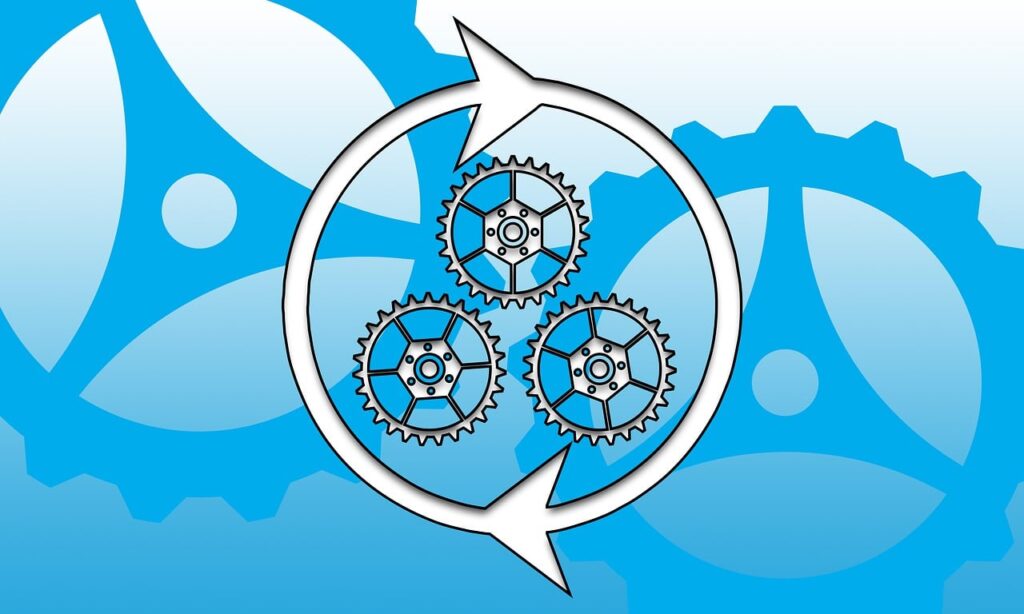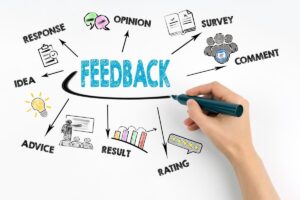How Consulting Companies Can Help Restructure Employment Policies
Controversial employment policies are causing companies to contemplate shifting them to avoid backlash. Critics argue that many policies are overly politicized, superficial or divisive. Therefore, many companies are shifting their focus in favor of performance-based policies.
However, it should be noted that for many companies their goals remain the same. The goals are improved hiring, fair promotions and enhanced team collaboration.
As the consultant you are often expected to guide your clients on their company goals and accountability. You are in a good position to help your clients understand how to analyze and improve processes while still focusing on their goals.
Tips to guide your client to shift employment policies to performance-based policies.
To help your clients shift their focus to have a performance based environment, consider the following tips:
Align policies with mission and values.
Help your client understand how their employment policy aligns with the company’s vision, mission, and values. For example, the purpose of hiring might be to gain the best benefit for their team and add the most opportunities for growth. Furthermore, a core value for hiring might be innovation that leads to more creative solutions.
As you consult with your client to restructure their employment policy, help them clarify ways that hiring and employment based on merit and capabilities improves operations, fosters employee growth and promotes accountability through clear guidelines.
Conduct an assessment.
Before you can provide consulting services for how to shift your client’s hiring strategy & policies, you need to know where their organization currently stands regarding that strategy. Consider performing a strength, weakness, opportunity and threat (SWOT) analysis focused on employment policies and performance.
The assessment should focus on the skills their employees have within the organization. Review who is working in the organization based on skills and whether those skills match their titles, roles and departments. Review skills versus needs, including discussing what performance gaps might be missing overall throughout the company, so you can help departments become more efficient and effective.
Define clear expectations and goals.
Using the information from the assessment, encourage your client to start developing performance standards for the titles, roles and departments. All too often, companies either neglect to develop specific performance standards for each role or they forget to update the standards, with the evolving times.
Relative strategies should have clear, measurable goals and objectives. The goals should focus on specific challenges and opportunities for employees based on what was found during the assessment.
Remember, these should be performance-based. For example, if your client has determined there is a performance gap in a particular department, aim to improve that gap with a strategy and milestones that can be tracked. Clearly outline what constitutes improvement in performance, how it will be measured and who will be responsible with expectations to hold them accountable.
Engage employees at all levels.
Help your client evaluate how they are communicating performance and develop a performance tracking system if they do not have one already. This should include Key Performance Indicators (KPIs) that will be used to track performance, aligning them with organizational goals.
It is important for your client to have a good flow of information that is effective and engaging. They also want to have ongoing feedback, both positive and constructive, to help employees improve and stay on track. To do this, they can conduct regular performance reviews to assess progress, discuss achievements and clearly identify any performance issues along with areas for development.
Embed policies into all aspects of the employee lifecycle.
Consistency in implementing employment policies based on performance is essential. Your client cannot have favoritism. They must be able to apply the policy to everyone. Work with your client to analyze and improve processes to achieve maximum effectiveness, efficiency and productivity. For example, they can leverage technology with performance management software and time-tracking tools.
By using analysis software like The Profit Enhancer Analysis, you will help your client streamline the performance management process, track data and facilitate communication. With time tracking tools, they can monitor employee productivity and ensure tasks are completed on time. The data obtained by software can then be analyzed to help identify trends, patterns and areas for improvement.
Provide ongoing education and training.
For many companies that are revamping their employment policies, the policies are already in place, but they fail to provide ongoing training. Communicating performance is not enough. Yet training is often lacking, causing employees to become frustrated, unengaged and ineffective in their work.
Assist your client by providing consulting services that look deeper into their existing training and help them to revamp it so that it is more directly tied to employee job responsibilities. Their training should be comprehensive, yet not too simple nor overly complex. They should also recognize that training is not a one-size-fits-all. It is an investment that is necessary throughout the year.
Measure progress and hold leaders accountable.
Restructuring employment policies is not a quick and done line item. You and your leadership team will need to regularly communicate performance-based goals. As a consultant, emphasize to your client the importance of maintaining open and honest communication with employees about their performance and expectations.
In their communication, guide them in developing a strategy to motivate, recognize and reward good performance. In addition, they should continuously review and refine their employment policies and practices, ensuring they are effective and relevant.
It is not only individual employee performance that should be tracked. One of the best advantages to consulting your clients comes after they restructure their employee policies. You can help them continue to monitor how restructuring of the employment policy affects the overall performance of the company. This is essential for the success of the company.
The Profit Enhancer Analysis is a consulting software that provides a detailed quantitative and qualitative evaluation of a company, checking how the company is performing and how it is positioned for growth. The software is designed to help consultants capture accurate and relevant data quickly during client sessions for analysis and also to develop benchmarks for growth strategies.
Visit us online today to take a tour of the software and to learn how it will give you a consulting advantage!
Consulting Clients on Streamlining Business Operations
Streamlining business operations can transform a company’s challenges into opportunities for enhanced productivity and profitability. Streamlining means simplifying processes in a sequence of activities performed regularly to achieve a particular goal. It also involves eliminating unnecessary steps or tasks.
How are you helping your clients in streamlining business operations this year?
Your goal as a consultant is to provide client management solutions for streamlining business operations to improve efficiency and increase profitability. This involves reviewing processes and implementing new strategies that can take time and are best completed in small steps.
Although your clients want immediate results, it is important to help them understand how the processes contribute to their overall organization’s performance goals. Focusing on efficiency is key.
Many organizations struggle with processes that waste resources and affect productivity and growth. Therefore, when streamlining business operations, areas to help your client include identifying redundant tasks and improving outdated or inefficient processes.
For example, a company might have several departments that use their own forms and have their own procedures. They are wasting time replicating data. As a consultant, you can help with consistency by developing company-wide forms and procedures. Unnecessary duplication can be reduced, thus improving workflows and eliminating bottlenecks.

Tips for Streamlining Business Operations
The right strategy and tips for streamlining business processes can make all the difference. Here are some tips to achieve this:
Automate processes first.
Keep in mind that when you automate processes, you want to understand the benefits your clients will get out of it. Look for ways automation can help with productivity, reduced errors, planning and scheduling, transparency and data security.
Understand the process before you automate it. You want your client to get an overall idea of the exact way tasks and processes are done before determining what areas could be improved by streamlining. For instance, mapping out their current processes will help your client visually understand each step in the process. Mapping will also clarify employee responsibilities and the resources they need. In addition, your client will eliminate waste when they find processes that might be interrelated or may not be as important.
Develop automation as a solution specific to the problem. For example, many companies find that the approval process for workflows can be time-consuming and complex. The goal of your client’s automation might be to design the automation appropriately to help speed up processes and minimize bottlenecks.
Remember, business processes should clearly contribute to your client’s goals. Sometimes these processes are outdated and need to be updated or improved first, before being automated. Profit Enhancer Analysis is an insightful software that the consultant uses to quickly identify the bottlenecks in their clients’ organization.
Check the ROI of automation. Automation may be costly when not implemented correctly; so you want to make sure the time and other resources spent do not outweigh the benefits. As a consultant, you can assist your client in taking a strategic approach during the planning stages. It is essential that they understand what the business needs to best extract the benefits. Then, review all the costs, including costs for developing, testing and maintaining the processes.
Simplify and standardize. Before you get too far ahead of yourself, you want to go through the processes with your client to determine the most efficient way to implement them. It will be worth it to take the time to standardize those processes, so they follow a uniform progression of tasks, instead of a chaotic unorganized approach.
Help your client identify processes that have similarities within multiple departments. The processes might have similar goals but different steps that can be taken by the department that is most efficient. Profit Enhancer Analysis is a powerful software that consultants use to support this transition.
Think long-term. Recognize that implementation can be a multi-year process. Include a test period. Leave room for growth and changes in your development. Also, put someone in charge of championing the implementation while convincing managers to change. Make sure your client accepts the multi-year commitment and the budget that will go with it.
Learn from other companies who have had success. One of the biggest challenges organizations have is integrating existing platforms across different departments. Automated and streamlined business processes that integrate well with existing platforms can give huge efficiency dividends, in time and resources. But your client does not want to step completely into unknown territory when they do not need to. Help them to use ready-made solutions that they can adapt from other companies who have had success.
Have the right strategies and tools. It can be frustrating and overwhelming to improve business processes without the right strategies and tools. Using lean principles is one way to help eliminate waste and improve efficiency and value. Also, consider bringing in technical expertise. Would you subcontract parts of the implementation? Think about solutions from AI-driven business tools, Business Process Management Software, Predictive Analytics Software or other appropriate tools.
Ask for feedback. Even the most improved processes can fail without proper communication. Keep communication channels open not only to prevent confusion about new process designs or rollouts, but also to get feedback before determining what needs improvement and how it needs to be improved.
Many people working in the areas you want to streamline might have great ideas. At the least, they can be invaluable in describing how the processes are working and how they can improve productivity and efficiency.
Be flexible when adjusting based on your results. For example, it can take time to train employees properly and not every employee will be as enthusiastic about the change or get the process down correctly the first time. Plan to have a test period. As employees implement your streamlined processes, monitor key metrics and KPIs to continue revealing areas that could benefit from further streamlining.
Improve Process Efficiency with The PEA
With Profit Enhancer Analysis, you will help your client analyze, prioritize, and implement streamlined processes. Profit Enhancer Analysis is an easy-to-use, predictive model software that specifically identifies performance gaps. Take the tour to learn how this software can help you gain the advantage of consulting on the effectiveness and efficiency of streamlining business operations and processes.
How Consultants Use PESTLE to Help Their Clients
PESTLE analysis is a popular strategic planning tool among management consultants to help their clients make informed strategic decisions. It is used to evaluate their client’s strategic position within their market, industry, and larger operating environment.
With the intensive data obtained, you can assist your clients in identifying potential opportunities and threats and ensuring their adaptability in dynamic markets.
Some areas that PESTLE analysis can have the most impact include starting a new business or industry, developing an innovative product, and evaluating marketing initiatives.

How PESTLE works
Specifically, the PESTLE analysis prepares your client’s business for external shifts using six factors: Political, Economic, Social, Technological, Legal, and Environmental.
Here is a deeper look at these six external factors to understand how the PESTLE analysis can impact a business:
Political Factors
Political factors involve issues brought on by governments, whether domestic or foreign. A business can be impacted due to government policies and legislation, trade barriers, changes in leadership, and regulatory trends. Political stability and instability can have many different effects on influencing a company’s opportunities and threats. Some areas of impact to evaluate might relate to changes in election cycles, legislation changes, fiscal policies, global conflicts, and trade agreements.
Economic Factors
Economic factors involve concerns that influence the economy’s performance and, in turn, affect business and industries. Such influences include inflation, interest rates, economic growth, and cost of living. Some areas to focus research on might be understanding the general economic climate, shifts in consumer spending, supply chain issues, and the labor market.
Social Factors
Social factors in a PESTLE analysis involve demographics, lifestyle, and consumer behaviors. Social factors include lifestyle trends, consumer profiles, attitudes, opinions, and purchasing patterns. Some areas to analyze are general product sentiment, social justice movements, health and wellness trends, and influences from current events and media.
Technological Factors
The external factors from technology involve technological changes that affect a company’s positioning. These can include research and development, data processing, AI learning, cybersecurity threats, and supply chain automation. When evaluating technological factors, consider the impacts of emerging technologies, energy usage, cloud storage, and access and reliability.
Legal Factors
Legal factors refer to how the law and regulations affect business operations. These can involve any number of laws, such as labor, consumer, health, and safety laws. They can also involve regulations of imports and exports. When evaluating legal factors that can impact a business, consider issues such as patent and intellectual rights, protection laws, occupational safety, trademarks, and licenses.
Environmental Factors
Environmental factors describe the impact on a business due to changes to our planet and ecosystem. These factors include shifting weather patterns, climate change, health crises, environmental regulations, and consumer awareness. Consider the short- and long-term impacts of issues such as natural disasters, conservation practices, alternative energies, and environmental hazards.
Using PESTLE to improve internal strengths and weaknesses
Although a PESTLE analysis identifies external opportunities and threats, it can help with strategic planning by giving your client more context about their performance and what impacts it. Therefore, it is important to understand the end goal of gaining insights that can be integrated into strategies.
Through insights learned from the six external factors, you can guide your client to integrate what they have learned to develop strategies with plans of action, budgets, innovative initiatives, and more. From the strategies, goals can be established with relevant performance indicators to improve internal strengths and weaknesses.
The Profit Enhancer Analysis is a strategic tool for measuring and tracking performance indicators. It can be a game changer for you when consulting your client following a PESTLE analysis. Help them to address external factors, seize opportunities, and avoid threats with the tools made for adapting their performance improvement strategy. Visit the Contact Us page to request a demo of the Profit Enhancer Analysis and learn more about how this software can strengthen your consulting services.
How Consultants Help Clients Identify Performance Gaps
Performance gaps happen for a variety of reasons and identifying them during your consulting sessions can minimize negative impacts on your client’s business. Gaps from poor company performance can lead to decreased quality, low morale, and attrition, among other issues. They can impact the customer experience and result in a loss of revenue and profits.
 The sooner you help your client identify and address performance gaps, the better. But helping your client understand why their company is underperforming is not always straightforward. First, there could be biases and denial. These can lead to favoritism and excuses that affect trust and morale.
The sooner you help your client identify and address performance gaps, the better. But helping your client understand why their company is underperforming is not always straightforward. First, there could be biases and denial. These can lead to favoritism and excuses that affect trust and morale.
To identify underlying issues that could be causing performance gaps, it is important that you and your client address all areas in a diplomatic, transparent, and open-minded way when reviewing potential causes of performance gaps.
Common causes of performance gaps
Unrealistic performance goals
Performance goals enable leaders and employees to plan and organize their work in accordance with achieving predetermined results or outcomes. Unrealistic performance goals can be frustrating to everyone, demotivating the team, and directly impacting performance gap management. Having the right goals can empower your client’s people and drive results. The goals should be reasonable and attainable.
Misalignment of individual goals and company goals
Goal setting can be challenging, and your client's team might be laser focused on their own performance goals. But making sure that their performance is aligned with the company’s performance is essential for building a strong brand. This involves guiding all the employees in the same general direction according to the company’s vision, mission, and purpose.
Lack of clarity
If your client’s leaders and employees are not clear of their performance goals, then it will be difficult for them to achieve the goals. Part of your employee performance strategy should focus on thoroughly communicating performance goals along with how they are supposed to meet benchmarks. Leaders should also provide clear support and guidance. In addition, it is essential that everyone has the tools and resources they need to achieve the goals and meet benchmarks.
General lack of motivation and disengagement
If your client’s employees are disengaged and lack motivation, they are less likely to care about meeting performance objectives. As an example, sometimes employees are missing skills, tools, and equipment to do their job effectively and efficiently. If your client has plans to purchase equipment, make upgrades, or provide training, this is all something that should be clearly communicated and adjusted for in benchmarks to keep the employees engaged and motivated.
Skill and talent gaps
Your client’s employees must have the right skill sets and abilities to perform their duties, otherwise it will be difficult for them to meet benchmarks. The gaps can lead to inefficiencies, errors, missed career growth, and affect their ability to work within teams. They can also jeopardize projects, deter innovation, and hinder business growth. Reviewing individual and team performance, talking to managers, and getting employee feedback are some of the ways to help identify skill and talent gaps.
Not assessing company performance
Performance gap analysis is a strategic planning tool used by businesses to assess the difference between current performance and desired outcomes. When not done regularly, you and your client could lose sight of the situation.
Assessing company performance on a regular basis with a performance gap analysis forces you and your client to think about the current situation in comparison to the goals. It is used to identify areas of improvement and enhance overall efficiency and effectiveness. A strategic action plan can then be developed to address performance gaps.
Not monitoring progress
When you assist your client with reaching their goals, the more often you and your client monitor their progress, the more likely they are to succeed. When goals are not reached, your client’s company might have a performance problem. Tracking progress is crucial because it keeps the focus on the overall company goals, increases accountability, and clarifies priorities. It can also help identify performance gaps in specific areas which are being monitored.
Today, there are a plethora of AI-driven tools to help with setting goals and monitoring progress. Profit Enhancer Analysis (PEA) is an AI-driven tool that helps consultants set performance goals for companies and track these goals easily. By using PEA, you can help your client monitor progress toward their objectives and make informed decisions based on that data.
Explore the power of this predictive model tool by taking a tour now. Go to www.TheConsultantsCompanion.com.
Why Stretch Goals Require a Different Strategy
Stretch goals are not for every company. While all companies have goals, stretch goals are for the company that wants to be truly challenged to reach extraordinary levels. These are goals that push a company's limits, raise expectations to create transformation, and achieve extraordinary results.
 Shall we say daring? Companies have certainly reported success with wildly ambitious objectives. With their success, the objectives required a huge amount of effort and dedication from a team.
Shall we say daring? Companies have certainly reported success with wildly ambitious objectives. With their success, the objectives required a huge amount of effort and dedication from a team.
However, stretch goals are not only widely misunderstood, but they are also widely misused. Companies that are distressed and in trouble might choose them in desperation, only to then receive disastrous results. In truth, the companies that can benefit the most rarely employ them.
Why?
Maybe this is because of the audacious nature of stretch goals. Unlike traditional goals where the focus is on incremental improvements, stretch goals prioritize ambition and inspire individuals to tap into their full potential.
The Strategy of Stretch Goals
A strategic approach is necessary for success. Yet before you push a client with an ambitious focus, make sure they are aware that it requires a different strategy than your typical SMART goals. Make them aware of these six strategies when considering pursuing stretch goals:
Transparently Communicating Goals
A significant amount of communication is essential so that everybody is very clear about the purpose of reaching these goals, how they are involved, and their expectations. When communicating, it is important to understand that these types of goals can't be forced. It's not that individuals should be working harder, but they should be working differently to create massive change, such as greater productivity and significant innovation.
Fostering a Supportive Environment
The focus should be on providing support in a culture that encourages experimentation, learning from failures, and embracing the lessons that come from exploring new ideas, perspectives, and approaches. To create this environment, motivation and engagement are essential. For example, create a clear and compelling vision that aligns with the company's mission and values. Communicating the vision can be a great tool for motivating individuals to work towards something greater than themselves. In addition, make sure you can provide the tools and resources to maintain the momentum.
Prioritizing Well-being
When your client’s team members are asked to pursue ambitious targets, their well-being is essential for successful implementation. Striking the right balance to leverage the massive productivity of the team while avoiding burnout is often the biggest challenge. After all, ambitious targets and high expectations can lead to increased stress, burnout, including unethical behavior if not approached thoughtfully. But do not let your client be dismayed. With the right communication and support, ambitious targets and high expectations can also motivate individuals, enhance creativity, and drive innovation.
Acknowledging the Risks
When your client’s company commits to pursuing stretch goals, they are creating an environment where individuals are encouraged to take calculated risks, think outside the box, and unlock their true potential. Risks should be calculated, with teams understanding the risks and being willing to step out of their comfort zone.
Fostering a Growth Mindset
Foster a growth mindset that encourages dedication and hard work. The emphasis should be on continuous learning and improvement, so the team can achieve breakthrough performances. Remember, your client is setting a fast pace for profound change with personal growth and opportunities.
Performing Realistic Assessments
It is important that you assist your client in regularly analyzing performance. Breaking the goals down into manageable steps is going to be key to helping their team avoid feeling overwhelmed. The team must be able to see that achieving the stretch goals is possible with a clear road map that shows incremental progress.
A great example of a modern company that has experienced success with stretch goals is Google. They have a clear philosophy: “More often than not, [daring] goals can tend to attract the best people and create the most exciting work environments…stretch goals are the building blocks for remarkable achievements in the long term.”
Ambitious goals can result in amazing benefits. Some of the benefits include making profound changes in your client’s business, breathing new life into their innovation, triggering creativity and inspiration, and promoting productivity that significantly improves operations.
Before you assist your client with pursuing stretch goals, help them clarify that their company is ready. A good start is to analyze the health of your client’s company and productivity. Begin with the Profit Enhancer Analysis at www.profitenhanceranalysis.com.
Does Your Client's Company Performance Reflect their Goals?
A successful company sets goals that mirror their vision, purpose, and mission, and their performance should reflect their goals.

When the company’s goals are aligned with the overall vision, purpose, and mission, the company can make the most impact. Additionally, company performance is built and sustained by the goals that are set.
While many companies focus on setting performance goals, if the performance does not reflect the goals, it could affect the future growth and prosperity of the company.
So, how do you and your client know when performance is reflecting their goals?
Know what the company is capable of.
To understand the full extent of how your client’s company performance should reflect their goals, you and your client must be able to make sense of how all areas of the business are interconnected and capable of meeting expectations. In other words, is the business ready to hit certain growth targets?
First, assist your client in reviewing the company's mission statement and strategic plan to identify key priorities and objectives. Then break down those objectives into specific, measurable goals that can be assigned to individual employees, teams, or departments.
Recognize that peak performance is influenced by many factors including new recruitment, training, equipment, financials, technology, economics, etc. For example, it is critical to consider how recruiting goals of qualified talent will impact customer service goals, which impact productivity goals, which impact revenue goals, and so forth.
If one area of your client’s business is not ready or capable of meeting targets, it can prevent other areas of the business from meeting their targets. This can affect the entire company.
Take a moment to understand that your client’s business has limitations just like any other company. Some things they can control and others they cannot. Those things that can be controlled might require a shift in company resources, such as adjustments to overhead costs, to align the company’s performance with the goals. For those things that cannot be controlled, encourage your client to be flexible until the company can acquire the resources needed or has more time to adjust to the shift.
Ensure everyone is working toward the same collective goals.
For the company to be successful, it is important that the shareholders, management, and employees work toward the same collective goals. For example, while every employee should have their own individual performance goals, they must also be aware of how their performance is a pivotal part of the overall performance of the company. Their goals directly impact the company’s goals.
Your client and their leadership team must clearly and concisely communicate the objectives, goals, and strategies to ensure that shareholders, management, employees and clients are all on the same page. It is only when everyone is fully aware of the company’s objectives, goals, and strategies that they can provide the best contributions toward the success of the company.
Gauge how effective improvement efforts are on the company.
The purpose of gauging the company's performance is to determine what is being done well and where improvements can be made. Gauging how well the business is performing, in addition to how effective improvement efforts are over time, is essential for you and your client to know whether their company’s performance reflects their goals.
This involves regularly checking the progress towards these goals and adjusting them as needed to ensure they remain relevant and aligned with the company's objectives. Some main areas to monitor might include productivity, finances, sales, industry benchmarks, customer satisfaction, and employee feedback. Additionally, your client will want to analyze year-to-year performance carefully.
While you might be focused on identifying problem areas that are underperforming, it is also important to remind your client to celebrate progress and successes along the way.
Gauging company performance to reflect goals can be a daunting task. To ensure your company’s performance reflects the goals, it is critical that you and your client learn to use different indicators. The Profit Enhancer Analysis provides consultants with the tools needed to monitor relevant indicators to effectively grow a successful business. Contact us to learn more.
Analyzing the Performance Problem
As a consultant working with your clients to improve company performance, one of the most important things you do is assist them in analyzing performance problems. You and your client’s ability to analyze what is going on with performance and gain insights into a problem can guide improvements.
Measuring performance provides your client with the basis for improving, but until something is changed, the problem could prevent your client from getting favorable results. But, before you can decide what improvements to make, you must first analyze the performance problem.

To understand more about analyzing performance problems, let’s look at 6 steps for analyzing the problem in more detail.
6 Steps to Analyze the Performance Problem
1. Review your revenue variances.
An effective approach to analyzing performance problems is to track progress using metrics and goals. Financial reports provide a way to track the progress of your income, revenue, expenses, etc. Your client should be performing a regular review of financial reports that includes comparing the company’s actual revenue to projections.
Projections are a financial representative of your client’s goals. Essentially, what you are doing when comparing revenue to projections is comparing variances in what the company did in a specific period to what the company had set out to do for the same period. Variances are usually reported in dollar amounts or percentages.
It is also helpful for your client to review variances from period to period and year to year to show how the business is performing during different seasons and annually, respectively. Also, review the variables across different areas, departments, and product and service lines.
By tracking the progress of the company’s performance, you and your client can recognize that there are problems that need improvement.
The problems will become evident where variances in the actual revenue compared to the projections are significant. The problems could signal underperformance, cost control, lack of sales, or something else. But do not jump to conclusions. A tool like the Profit Enhancer Analysis will give you the further investigation required to help you and your client evaluate the reason behind the problem.
2. Research potential reasons for variances.
Accurate identification of the performance problem is crucial before you can determine what you need to improve. Your variance analysis can help you identify where the problem exists in terms of department, product, service, process, or other place in your company. However, more research is necessary to identify if you have an internal or external problem.
Internal problems to investigate include staffing shortages, technology issues and upgrades, and equipment downtime. External problems to investigate include increases in vendor expenses, availability of materials and supplies, seasonal issues, weather and economic trends. These are by no means complete lists of internal and external problems, just examples.
3. Review non-financial factors.
It could be helpful to go back to non-financial factors from your projections and review them in greater detail. These could be processes and numerical information that were used to determine the projections. Sometimes, projections are overestimated in anticipation of growth. There might have been factors that affected the projections, such as a great performance year for a specific reason that would not necessarily be repeated in its numbers. The Profit Enhancer Analysis provides consultants with an ability to increase their precision in assessing non-financial factors.
4. Review your goals.
It can also be helpful to review your goals, separate from your finances and other factors. Goals could involve adding touch points to increase customer service, buying new equipment to improve technology, and developing new policies with more training. Consider how plans to achieve the goals and setbacks that were encountered could have factored into performance problems.
5. Make performance comparisons.
Is your performance problem specific to your company, or is it an industry problem? Certain circumstances could affect the performance of your competitors, too. It is important to put your company’s performance into perspective by comparing how your competitors have performed over the same period. Furthermore, consider trends or current events that could affect customer behavior or otherwise affect the market.
6. Decide on changes.
As you have probably noticed, the improvements needed to address performance problems go beyond the bottom line. They can help your client’s leadership by improving communication and time management skills, clarifying goals and expectations, and streamlining processes. In other situations, they can lead to training, equipment purchases, or expansion.
To decide on what changes to make for improvement, you can help your client understand how to use the information that was obtained from the above steps. Consider if factors were in the client’s control or not.
If the client has control, they are better able to influence changes for improvements. Even if the problem is out of the client’s control, such as with weather or current events, improvements can be made to make the company more prepared in the future.
The cost-effectiveness in solving performance problems using each step cannot be emphasized enough. For example, it is crucial to identify the right problem so it can be addressed adequately, as well as understand the reasons for the problem and what factors influence the problem.
In some cases, your client might determine that the performance problem is not worth fixing at all. In other cases, your client might need to dig deeper and return to different steps to fully analyze the performance problem.
The Profit Enhancer Analysis is an easy-to-use software to help track company performance using both financial and non-financial measurements. Contact us for a demo to learn more about how this software will help you more efficiently and effectively consult your clients.
What Valuable Feedback Really Looks Like (and How to Use It to Improve Performance)
As a consultant, you rely on valuable feedback from your clients to drive change in their organization. Your clients also rely on the feedback they get from their leaders, employees, customers, and the community. The feedback that is received helps them improve their company. But for optimum improvement, you both rely on honest feedback that has value.
 Valuable feedback is essential for driving change. A problem is that much of the feedback might be based on opinions with biases. Plus, when you are communicating with multiple leaders in an organization, you are bound to get different feedback that is conflicting.
Valuable feedback is essential for driving change. A problem is that much of the feedback might be based on opinions with biases. Plus, when you are communicating with multiple leaders in an organization, you are bound to get different feedback that is conflicting.
How do you know which feedback is valuable to effectively improve performance?
Valuable feedback gives you clarity and is purposeful, meaningful, and compatible with what you know and are trying to achieve. For your client to improve their company’s performance, it is important to recognize valuable feedback.
5 Qualities of Valuable Feedback
Task specific
Valuable feedback has a clear business focus with a larger overall goal for the company instead of being generic. It should be concise and provide data to support the feedback and examples, such as talent issues, project details, and goals met. Incomplete or vague information can cause misunderstandings and delays. Clarifying that you and your client have all the specifics necessary to take the next step is essential when receiving feedback.
Timely
It can be discouraging to manage feedback that you wish you had gotten sooner. We have all heard stories about someone failing to inform them about a problem that needed to be addressed immediately. Valuable feedback communicates complete information about something in a timely manner so you can act on it efficiently. For this to happen, feedback should be part of a routine. You must have regular check-ins with your client, and they must have routine check-ins with their team to ensure no one is left waiting around.
Meaningful
Constructive feedback that is given in a conversational manner, which is useful and provides aspects that you and your client can control, is the most valuable. Ideally, you are looking for a balance of negative and positive attributes that are realistic for identifying and solving a problem. Listen for feedback that offers praise for hard work, focus, determination, imagination, and fairness, but is not sugarcoated. At the same time, you do not want all criticism either. Your client should recognize that there is room for improvement.
Well Delivered and Received
Effective criticism needs to be delivered and received with respect and care. It is only effective when the person receiving it is receptive to it. If there is avoidance or blame, problems will be less likely to be addressed and solved. In addition, a good indicator of valuable feedback is in how it is given. Opinions are good, but fear and bias influence behavior that can manipulate or limit information. This can significantly affect how change that is meant to improve performance will be accepted. When you are working with a client and their team, listen to the language and watch for signs that might indicate if they are disconnecting from the feedback or have other negative reactions to it.
Goal-oriented
Valuable feedback must be actionable. In other words, it must be tied to what it is your client is trying to achieve with their company’s goals and consistent with the purpose, vision, and mission of the company. Without the connection, it will be challenging to get the results you and your client are striving for. Listen to examples of how the company can improve in areas such as completing multiple tasks, managing complexities, going the extra mile, and adhering to company policies. You want to be encouraging instead of discouraging, so be clear about your intentions and goals when requesting feedback.
Creating an Actionable Plan Using Feedback
When done well, valuable feedback gives hope for change because it helps give solutions and is actionable. To improve performance, help your client use the feedback to develop a simple, actionable plan that identifies the following:
- Performance issues for improvement
- Clearly identified expectations
- Actionable goals that are realistic to achieve
- Tasks that can be connected to the overall growth of the company
- A timeline to achieve goals
Remember that feedback is the lifeblood of improving performance. Valuable feedback helps to keep everyone on task so they can perform their best.
The Profit Enhancer Analysis is our proprietary predictive model software that helps consultants gather feedback from your clients to improve their company's performance with strategy and transparency. Each time you gather feedback, you can compare it to prior feedback to get a good understanding of how performance is improving or not progressing. By tracking performance, the software helps you to see the consistency of valuable feedback that can be used for achieving short-term and long-term performance goals for your client.
What Causes Performance Gaps?
Performance gaps negatively impact your client’s business, causing inefficiencies and ineffectiveness that can create a downward spiral in your growth, revenue and profitability. They can appear in any area of the business and might not be immediately noticeable.
These unnoticed issues can significantly affect your clients’ ability to achieve the results they have been working hard to accomplish.
 As a consultant, it is your duty to help your clients develop and set high-achieving performance goals by preparing them to address discrepancies before they significantly impact their growth goals.
As a consultant, it is your duty to help your clients develop and set high-achieving performance goals by preparing them to address discrepancies before they significantly impact their growth goals.
Discrepancies in performance, or the difference between current and desirable performance, is called a performance gap.
When a discrepancy is a cause for immediate or repeated concern, it is important as a consultant to identify the reason or reasons with precision so your client can experience a corrective course of action as quickly as possible.
5 common reasons for performance gaps
Lack of clear performance goals
It will be difficult for your client’s employees to meet their performance goals if they do not understand what is expected of them. Not only do they need clear communication about their goals, but their goals should be aligned with the company’s goals. This helps give them a roadmap to success in their work and provides clarification about how their work connects them to the overall success of the company.
Having unreasonable expectations
As the hired consultant, when setting performance goals for your client’s employees and the team, it is always good to include them in the process. Having your client solicit the input of their team members will help establish attainable and realistic objectives. In addition, including clear job titles, job descriptions, written processes and guidelines will help avoid inconsistencies in performance, so your client’s employees have the best chance to meet reasonable expectations.
Poor leadership communication
When employees do not get clear support and guidance from their leaders, it makes it harder for them to perform their best. Good leadership creates the right culture that supports growth and improvement for employees to thrive. Remind your clients that how a leader communicates is essential in motivating and engaging employees, with the intention of positively impacting the overall success of the company.
Insufficient training and resources
Even the best employees can only do so much unless they have the tools, training, and resources available to them. Your client will not be able to utilize their strengths to their fullest potential. Advise your client not to wait until the annual performance review to learn from an employee about what they are lacking. Educate your client to hold team meetings regularly to understand policies, procedures, office resources and supply needs. Additionally, offer your client relevant training and workshops to strengthen employee skills and knowledge.
Ignoring personal issues and conflicts within teams
Personal issues and conflicts within teams distract from performance. They create challenges that impact motivation, require time and effort to resolve, delay completion of tasks, affect revenue, and can even put much needed goals at risk. They can sabotage everything a leader is trying to accomplish. Many times, issues and conflicts go unnoticed because of cultural problems within the company. As the hired consultant, it is imperative that you guide your client to create a culture that maintains professionalism and fosters respect for all.
Effective performance management is essential for business. Including performance gap analysis in your consulting process for client management is a key factor in detecting any patterns or problems before performance levels decrease.
Performance gap analysis helps you, as the consultant, and your client identify and correct problems with performance more quickly. It helps put measures in place that are more effective. In addition, it is in your best interest to help your client to always be on the lookout for performance gaps before they become accepted as a part of the company culture. Monitoring performance and conducting gap analysis regularly is vital for the success of your client’s business.
The Profit Enhancer Analysis provides an easy-to-use tool for consultants to help their clients quickly identify problem areas and track performance. You can then focus your attention on areas that need the most help in improving performance.
5 Ways to Address a Performance Gap in a Team
A performance gap can negatively influence the productivity of your client’s team and affect the success of their organization. As their consultant, identifying performance gaps and addressing them quickly are essential to getting them the results they anticipate in their business.
In general, performance gaps are often related to leadership, direct skills gaps, or lack of motivation. While identifying individual performance gaps in a team can be challenging, there are ways to address the overall performance of a company to maintain smooth running operations and keep the business healthy and thriving.
Consulting Your Client on a Performance Gap
Here are 5 ways to help your client address performance gaps:
Effective communication
Effective communication is paramount to team performance. If leaders in an organization are not effectively communicating clear performance targets, the teams will not have a clear understanding of what their performance goals are. Without a clear understanding, it will be difficult for them to meet expectations.
To overcome communication problems and reduce the potential for performance gaps, recommend your client and the leadership team get training on effective communication that includes setting baseline standards and policies for company communication. Additionally, encourage positive, open communication practices as part of the company culture.
Leadership development
It is important that your client develops good leadership within their organization. A big problem that can occur in performance is when a high performer is promoted from a technical role to a leadership role without leadership development in place. The high performer is good at doing the work but does not know how to lead. This can cause them to micromanage, do the work themselves, and ultimately demotivate the team.
To perform effectively, your client needs to provide clear support and guidance to their team. A good recommendation to address this area would be for your client and their leadership team to participate in a formal leadership development program.
Skills training
Spotting missing skills in the team can be difficult. New technology could be problematic for senior leadership who were very good at doing their job previously but have a difficult time shifting to new skills. Even with appropriate training, it could take them longer to grasp new concepts and cause them to underperform.
On the other hand, new employees can be trained in certain skills, but will have a learning curve that only experience can provide. What can make performance gaps even more difficult to catch is when a problem arises from in-house training. For example, one leader may learn a “bad habit” from another leader.
To address skill deficiencies, your client’s team needs to be able to reach the performance goals your client sets for them. They need to have the right skills sets, training, knowledge and experience to perform their duties.
While investing in good training is essential, encouraging your client to have regular group leadership workshops can help give them consistent training to do their jobs the way they want them to do it, with the skills they need.
Workplace culture and environment
An important aspect of gap performance management is creating a high-performance culture that supports growth and improvement. This environment empowers the team with clear values and attainable goals, keeps them motivated, and gives them the resources, knowledge, and support needed to achieve those goals.
It is essential to highlight positive performance experiences so the team can become motivated and engaged. A good way to do this is for your client to arrange regular meetings with their team to reinforce best practices and encourage good habits.
Competency frameworks
Having a structured approach can effectively close gaps in performance. Helping the team get the training and development to close the skills gap puts your client’s company on track for success. Competency frameworks further increase a company’s potential to perform its best by creating a foundation to assess and monitor productivity. This comes down to conducting regular performance gap analysis that allows your client to recognize what good performance looks like as opposed to only looking at skills and development.
Competent performance is essential to the success of your client’s business. The sooner performance gaps are addressed, the better. The Profit Enhancer Analysis can help you gather and analyze the appropriate data about your client’s company performance, so you can review how their company is performing in different areas over time.










